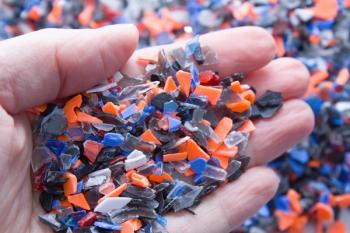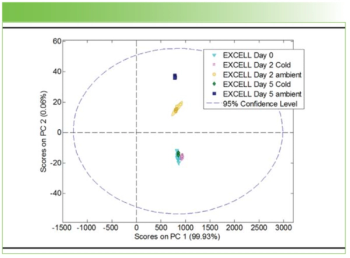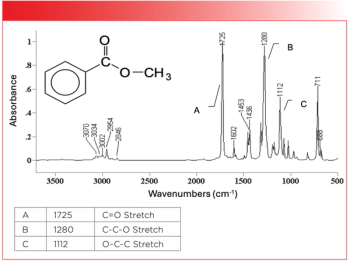
Best of the Week: SciX Award Interviews, Tip-Enhanced Raman Scattering
Top articles published this week include an interview about aromatic–metal interactions, a tutorial article about the recent advancements in tip-enhanced Raman spectroscopy (TERS), and a news article about using shortwave and near-infrared (SWIR/NIR) spectral imaging in cultural heritage applications.
This week, Spectroscopy published articles highlighting recent studies in several application areas in analytical spectroscopy, including electrophoresis and microfluidics, nanomaterials, chemical imaging, and cultural heritage. Key techniques highlighted in these articles include shortwave infrared (SWIR) spectroscopy, surface-enhanced Raman spectroscopy (SERS), and tip-enhanced Raman spectroscopy (TERS). Happy reading!
Lisa Flanagan and her team at the University of California, Irvine developed a label-free method to isolate astrocyte-biased human neural stem and progenitor cells using their distinct electrophysiological properties, specifically higher membrane capacitance, as a sorting marker via dielectrophoresis (DEP) (1). They introduced a novel two-step DEP sorting technique and device, marking the first use of electrophysiological traits alone to enrich these cell types (1). This advancement supports further research into their therapeutic use. Flanagan will receive the 2025 Mid-Career Award from the AES Electrophoresis Society at SciX 2025 for her significant contributions to electrophoresis and microfluidics. In this interview, Flanagan discusses her team’s recent study.
A collaborative study by Queen’s University Belfast and Fudan University demonstrated that aromatic molecules strongly adsorb onto silver and gold nanoparticles through π-metal interactions under ambient conditions, challenging the long-held belief that such interactions are weak with these metals. Using surface-enhanced Raman spectroscopy (SERS) and theoretical modeling, the team showed these interactions are dispersive and significant, suggesting that prior strategies using surface modifiers may be unnecessary (2). This discovery could reshape the design of functional materials across multiple fields (2). Corresponding author Steven Bell will receive the 2025 Charles Mann Award at SciX 2025 for his contributions to analytical chemistry. In this interview, Bell discussed his team’s recent study.
In this tutorial article, Yukihiro Ozaki discusses the recent advancements and expanding applications of tip-enhanced Raman scattering (TERS), a technique that merges scanning probe microscopy (SPM) with surface-enhanced Raman scattering (SERS) (3). TERS provides ultra-high spatial resolution for localized chemical analysis at the nano- to subnano-scale, surpassing the diffraction limit of light. Ozaki emphasizes TERS’s adaptability across diverse environments, including ambient air, ultrahigh vacuum, and electrochemical systems (3). The article also highlights TERS’s growing impact in areas such as single-molecule detection, biomolecular studies, nanomaterials characterization, and high-resolution chemical imaging.
Researchers from Prince of Songkla University and NARIT have developed a low-cost, long-range Raman spectroscopy system using night-vision (NV) technology instead of expensive ICCD cameras. Published in Optics Express, the study describes a system that employs a hybrid optical-digital design with commercially available components and 3D-printed parts (4). Despite NV's lower sensitivity, performance was restored using optical optimization and digital deconvolution, achieving high-resolution spectral identification at distances up to 60 meters (4). The system detected various chemical compounds with a signal-to-noise (S/N) ratio comparable to traditional systems (4). This breakthrough makes advanced standoff spectroscopy more accessible for applications in security, environmental monitoring, and planetary exploration.
A multinational research team led by Sotiria Kogou has developed a noninvasive technique to detect and monitor damaging salt and moisture accumulation in historic buildings. Published in Analytical Chemistry, the method combines shortwave and near-infrared (SWIR/NIR) spectral imaging with remote Raman spectroscopy and machine learning to identify salts like sodium sulfate and their hydration states from up to 10 meters away (5). Validated through laboratory experiments and applied at Fort Brockhurst in England, the dual-sensor system generated over 100 million spectra, mapping salt distribution and damage zones (5). This study offers conservationists a new, touch-free tool for preserving cultural heritage.
References
- Chasse, J. Harnessing Membrane Capacitance for Safer and Faster Neural Cell Therapies: An Interview with AES Electrophoresis Society 2025 Mid-Career Award Recipient Lisa Flanagan. Spectroscopy. Available at:
https://www.spectroscopyonline.com/view/harnessing-membrane-capacitance-for-safer-and-faster-neural-cell-therapies-an-interview-with-aes-electrophoresis-society-2025-mid-career-award-recipient-lisa-flanagan (accessed 2025-06-11). - Chasse, J. SERS Sheds Light on Aromatic–Metal Interactions at Ambient Conditions: An Interview with Theophilus Redwood Prize Winner Steven Bell. Spectroscopy. Available at:
https://www.spectroscopyonline.com/view/sers-sheds-light-on-aromatic-metal-interactions-at-ambient-conditions-an-interview-with-theophilus-redwood-prize-winner-steven-bell (accessed 2025-06-11). - Ozaki, Y. Tip-enhanced Raman Scattering using a Chemically-modified Tip. Spectroscopy. Available at:
https://doi.org/10.56530/spectroscopy.jc6576b4 (accessed 2025-06-11). - Workman, Jr., J. Night Vision Boosts Affordable Raman System for Long-Range Chemical Detection. Spectroscopy. Available at:
https://www.spectroscopyonline.com/view/night-vision-boosts-affordable-raman-system-for-long-range-chemical-detection (accessed 2025-06-11). - Workman, Jr., J. New NIR/Raman Remote Imaging Reveals Hidden Salt Damage in Historic Fort. Spectroscopy. Available at:
https://www.spectroscopyonline.com/view/new-nir-raman-remote-imaging-reveals-hidden-salt-damage-in-historic-fort (accessed 2025-06-11).
Newsletter
Get essential updates on the latest spectroscopy technologies, regulatory standards, and best practices—subscribe today to Spectroscopy.





